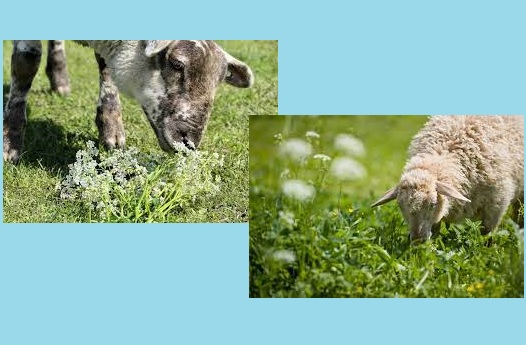
A significant number of livestock mortalities in many farming areas can be attributed to plant poisoning as many farmers report symptoms that relate to poisoning.
This occurrence is most common during the spring months, at the onset of rainfall activities, or during periods of drought especially in degraded rangelands.
For this reason, says Mr Erastus Ngaruka, Technical Advisor on Livestock and Rangeland at the Agricultural Bank, farmers must take precautionary measures during the coming months in order to protect their animals from consuming toxic plants.
“Many rangeland plant species contain chemicals that are poisonous to livestock when eaten. Poisonous plants vary in their toxicity and the symptoms displayed by affected animals,” says Ngaruka.
“Generally, the level of toxicity can be classified into two: plants that are extremely toxic and those with low toxicity levels. The extremely toxic plants such as Dichapetalum cymosum (Poison leaf/Gifblaar) will only have to be ingested in small amounts to cause harm or for animals to show signs of poisoning.
“Whereas plants with lower toxicity such as Geigeria ornativa (Vermeerbos) show their effects after being consumed in larger amounts and over a longer period.”
The toxicity of poisonous plants is influenced by several factors such as soil type, climatic factors, seasons, plant growth stage, plant part eaten, and plant moisture content amongst others.
Poisonous plants have different effects on animals and different clinical signs; they are classified as plants either causing; heart problems, nervousness, diarrhoea, liver damage, obstruction in the gut, skeletal and skin problems, reproduction problems, and plants causing discolouration in meat and milk.
Ngaruka also points out that some valuable forage plants exude toxic effects when overconsumed, eaten at a certain growth stage, and when certain parts such as flowers are eaten.
“For example, Tribulus terrestris (devil’s thorn, ohongwe, Oshosholo, Nhonho, duwweltjie) is a common weed in many areas; it is a valuable forage plant that is well-utilized by livestock when green but becomes poisonous at wilting.
“Others include grasses such as Cynodon dactylon (quick grass, ongwena, kweekgras) and Panicum maximum (guinea grass) amongst others. Fodder plants like lucerne, maize and others can also cause poisoning (nitrate poisoning), for example when hay is spoiled and mouldy due to poor storage when it gets wet.
“In many rangelands, poisonous plants mostly emerge during spring months (July to October) and when pastures are in poor condition or overgrazed. In some rangelands however, they form part of the plant composition throughout the year.”
The livestock expert says that animals are vulnerable to poisonous plants due to the following basic factors amongst others.
➢ Hunger; animals are supposed to satisfy their daily forage requirements, thus, if the valuable forage is depleted, the animal will be tempted to eat any available plant to satisfy their daily needs and simultaneously consume poisonous plants. This is more likely to occur during drought periods and when the rangeland is degraded.
➢ Inexperience; this can be attributed to animals being new in the area or young and thus they are not familiar with the local forages or cannot distinguish between valuable plants and poisonous plants. It is thus advisable to avoid introducing animals to a strange area during the time/season the poisonous plants are active.
➢ Accident; an animal familiar with the local forage is also vulnerable to plant poisoning as it may ingest it by accident. This is when a poisonous plant has grown close to or blends in with a valuable plant and ingested together. Moreover, it may be that a poisonous plant may have been harvested together with grass hay.
The basic means of preventing and treating plant poisoning include:
➢ Avoid overgrazing and do not allow animals to graze in areas where poisonous plants tend to grow. Such areas can be camped-off and grazed only when the poisonous plants disappear, and the other valuable plants dominate.
➢ In the event of a suspected poisoning, the animal should not be allowed to drink water for at least 2 days especially when poisoning is suspected to be from an extremely toxic plant (e.g., Poison leaf), and the animal should be handled with care and not stressed. These are ways to limit or slow the circulation of poison through the entire body.
“It’s advisable that farmers familiarize themselves with their rangeland, develop an inventory of local valuable plants and poisonous plants. Moreover, there are guidebooks for more information that assist with the identification of these plants. Such books include “Toxic Plants of Veterinary Importance in Namibia” and “Grasses of Namibia” amongst others,” says Ngaruka.
In the photo: Poisonous plants are harmful to the livestock.






